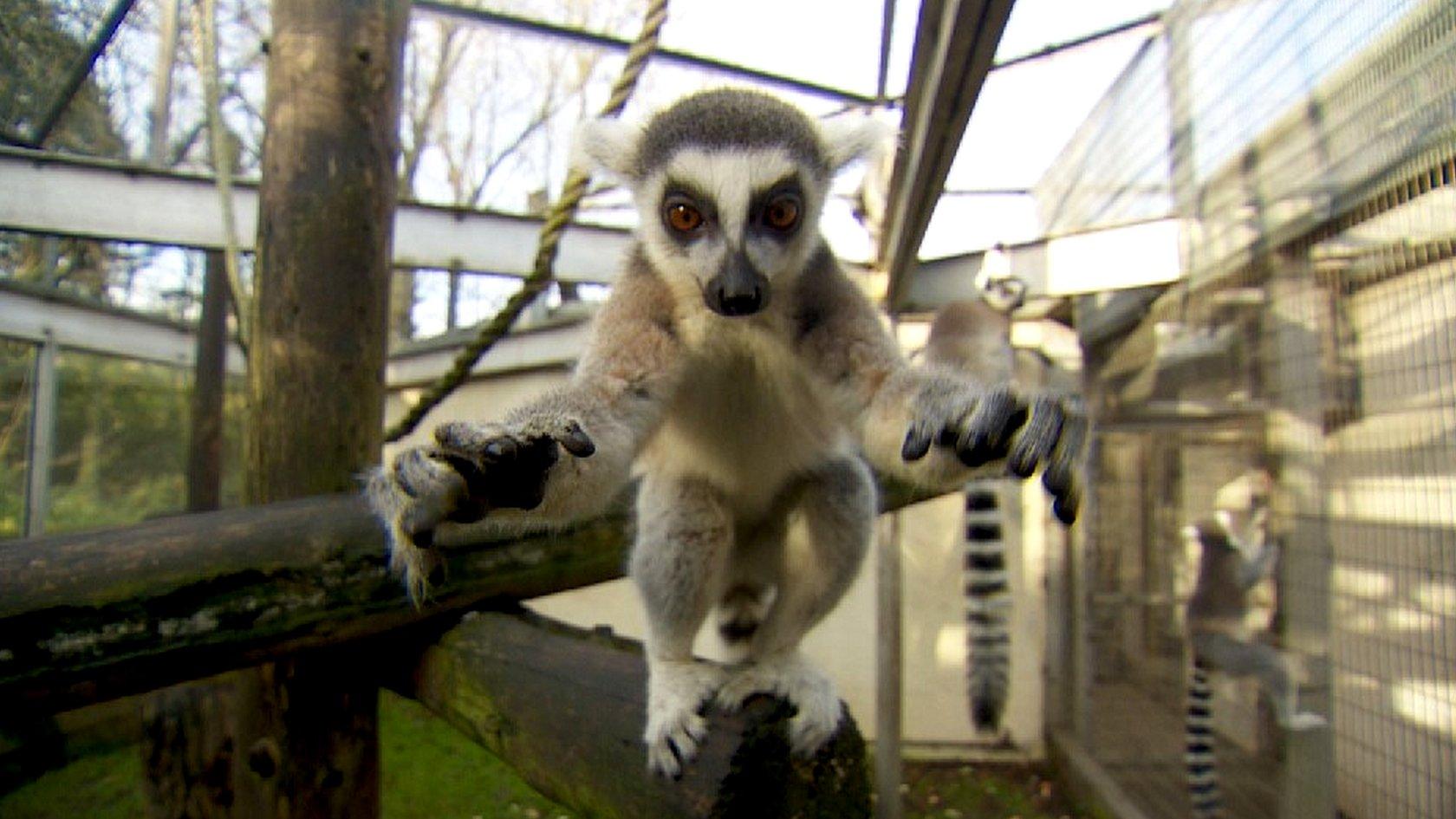Red List: Extinction threat to overlooked species
- Published
- comments
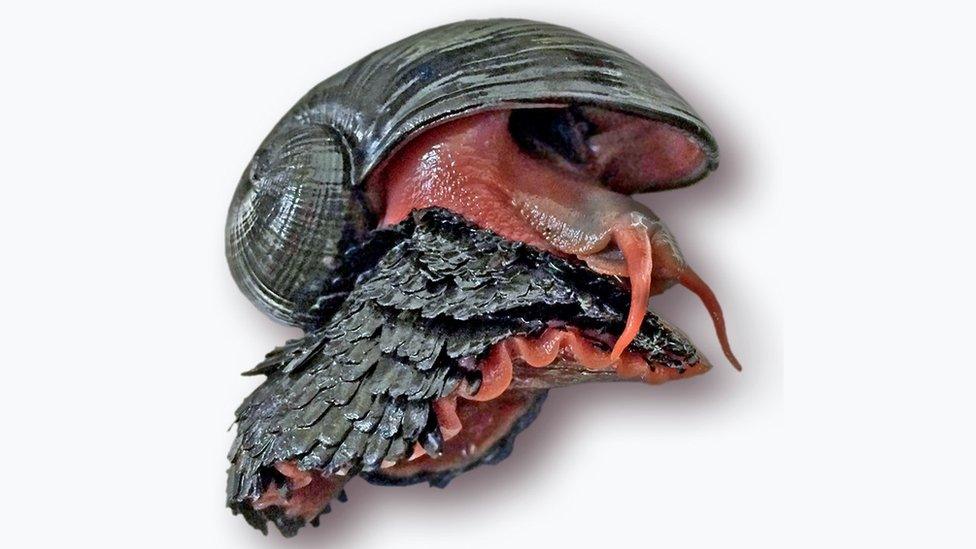
The scaly-foot snail lives only at hydrothermal vent sites
A deep-sea snail, many of Europe's fungi and half the freshwater fish in Japan are just some obscure additions to a list of threatened species.
The Red List, external, a conservation status catalogue of more than 100,000 species, is compiled by the International Union for the Conservation of Nature (IUCN).
This list update "delves into" ecosystems not examined before.
"[Many species] probably have been overlooked," said Craig Hilton-Taylor, head of the IUCN Red List Unit.
Their status serves as a warning. And "for some groups, they're jumping on to the list in a threatened category".
Why are so many fungi suddenly under threat?
Fungi, Mr Hilton-Taylor said, were relatively poorly studied, in comparison with many animals.
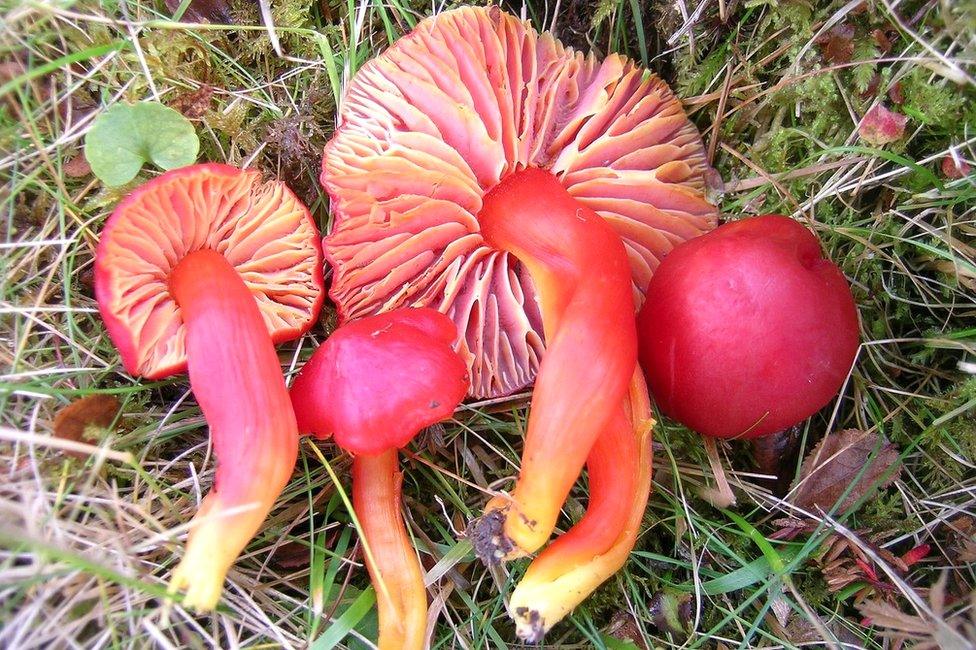
The splendid wax cap is one of 15 European fungi joining the Red List
"By bringing experts together and sharing all the information, we've seen a pattern - species are declining everywhere across Europe," he said.
"That's helped us identify that semi-natural grasslands - a key European ecosystem- are also declining."
The abandonment of traditional grazing and more intensive agricultural practices, including increased use of fertiliser are key drivers of that.
"Fungi are very sensitive to changes in the environment, like pollution - they're the first to go," said Mr Hilton-Taylor.
"But once they go, plants dependent on fungi will disappear, then the animals dependent on those plants."
What else is new to the list?
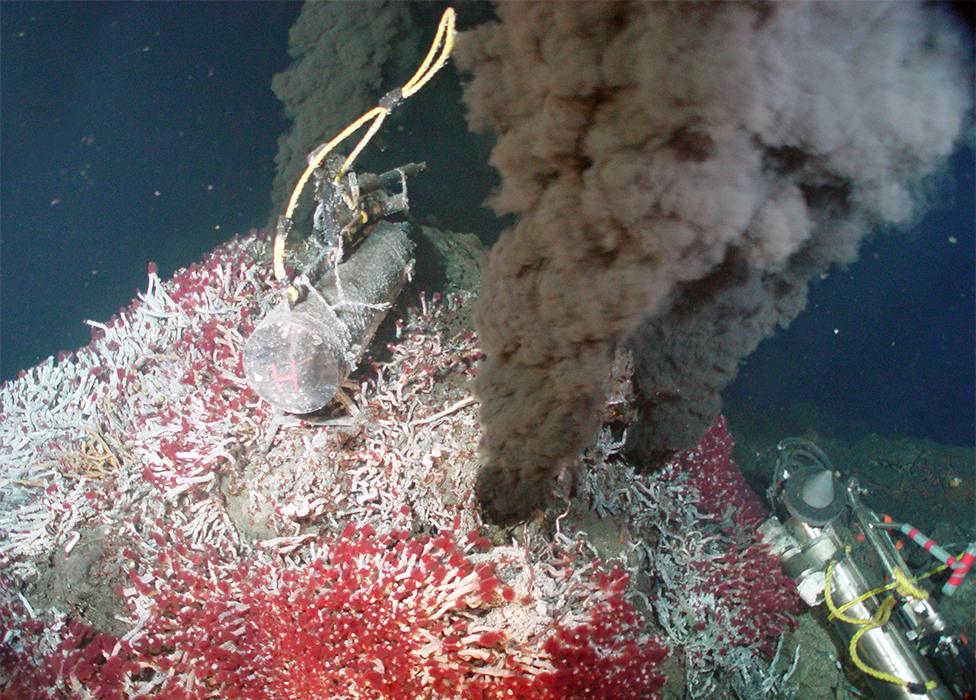
A vent system belching hot water and surrounded by tubeworms
The scaly-footed snail is probably one of the weirder new additions.
Chrysomallon squamiferum exists only at hydrothermal vents - openings in the seafloor, where geothermally heated water spews out.
These are hotspots of marine life in the otherwise cold depths.
But they are also rich in natural minerals and are being explored for deep-sea mining.
Conservationists say that could threaten the life forms unique to these chimney-like deep structures.
About 500 deep-sea bony fish species, including the bioluminescent lanternfish, have also entered the Red List.
These can live at depths beyond 1,000m (3,000ft) and face potential threats from human exploitation of the deep, including fishing activity and the oil and gas industries.
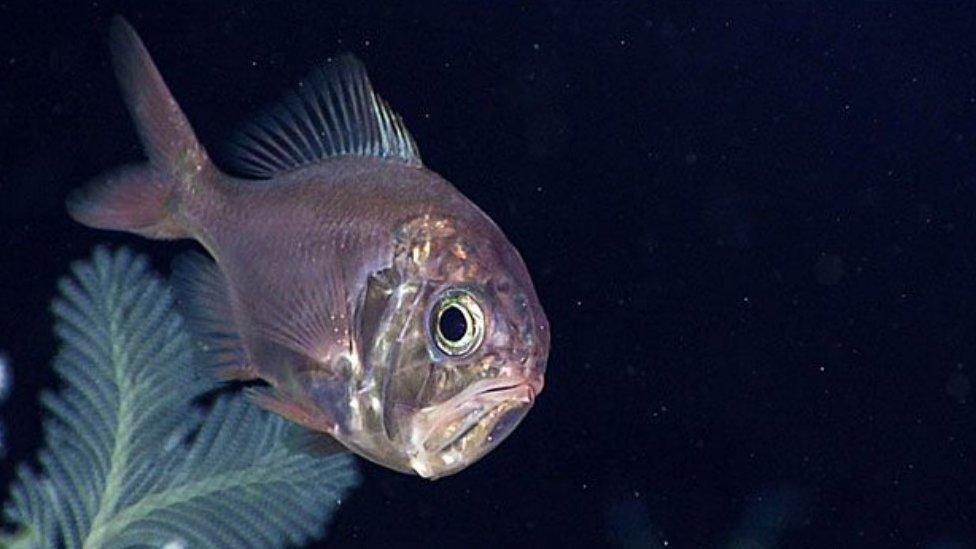
Deepwater fishes, including the western roughy, are threatened by deep-sea exploitation
In freshwater environments, the picture appears to be even more stark.
Half of Japan's freshwater fishes and more than a third of Mexico's are under threat - something scientists attribute to "mismanagement" of rivers.
"Dam construction, agricultural runoff, diversion of flow, and climate change all interact to place pressure on freshwater biodiversity," said Dr Thomas Lacher, from the Department of Wildlife and Fisheries Sciences at Texas A&M University.
"Our neglect of the management of freshwater places both biodiversity and human health and wellbeing in jeopardy,"
Has the conservation status of any species improved?
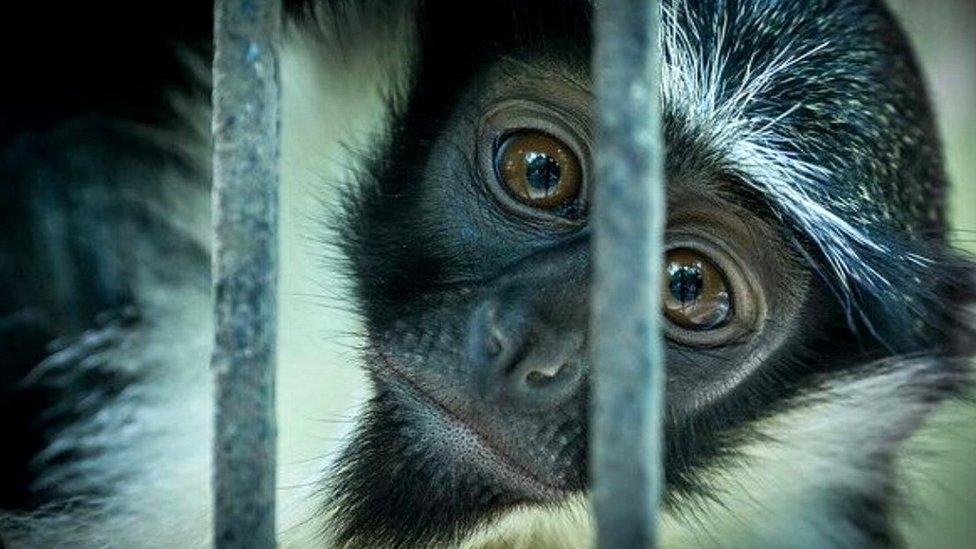
Hunting and habitat loss has driven six primate species in West Africa further towards extinction
For this update, nothing has been "downlisted" or moved into a less threatened category, confirming, scientists say, the extent of the global extinction crisis.
In fact, some much less obscure species have been "uplisted" with this update. Hunting for bushmeat, combined with habitat loss has pushed seven species of primate closer to extinction, six of which are endemic to West Africa.
The list also includes assessments of most of the dry forest trees in Madagascar and updated assessments for 23 rosewood and palissander tree species, both of which are exploited for their precious wood.
Claire Raisin, Chester Zoo's field programmes co-ordinator for Madagascar, told BBC News these "magnificent" trees played a "vital role in providing fruit, shade, soil stability and water retention in a country where many people rely on small-scale farming and agriculture for their survival".
Conservation scientists say this update should be a particular wake-up call, given the recent global report outlining the threat to nature and the impact of that threat on human health and livelihoods.
"Conserving nature's diversity is in our interest," said IUCN acting director general Dr Grethel Aguilar.
"States, businesses and society must act urgently to halt the overexploitation of nature and must respect and support local communities and indigenous peoples in strengthening sustainable livelihoods."
Teenagers saving Madagascar's forest
- Published28 April 2019
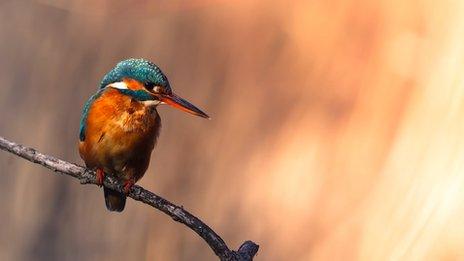
- Published3 May 2019
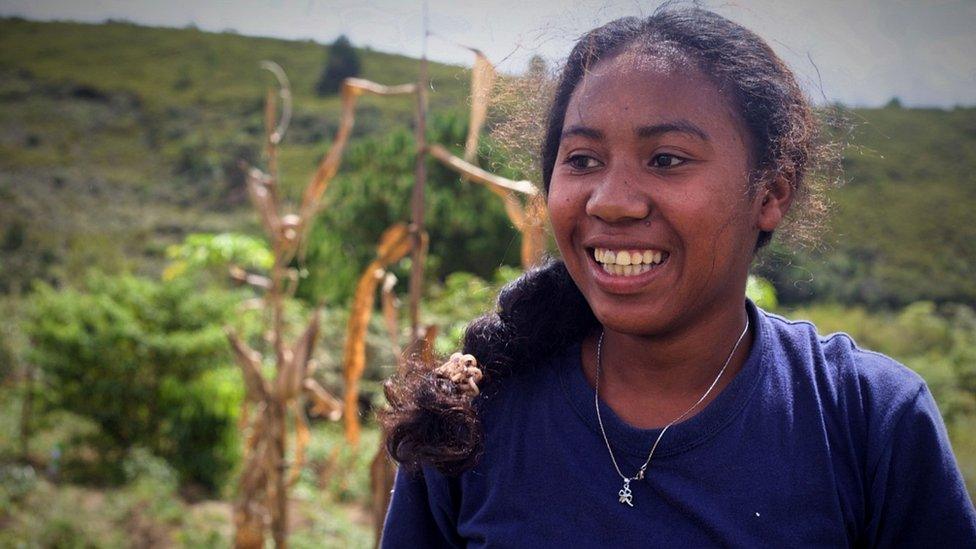
- Published18 January 2017
